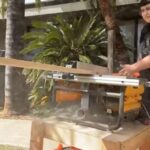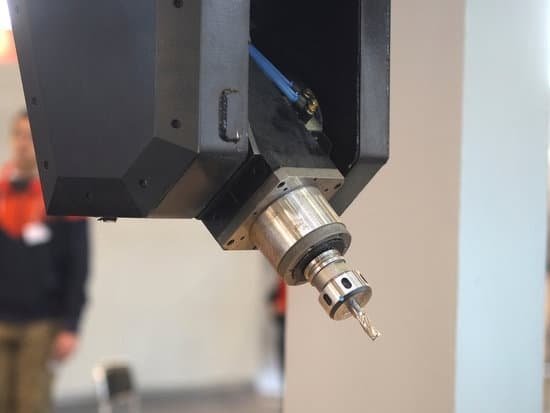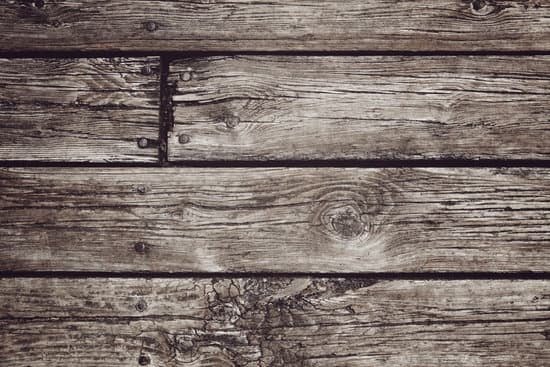Woodworking wood planes are essential tools for any woodworking enthusiast or professional. These versatile instruments have been used for centuries to shape, smooth, and finish wood surfaces with precision and finesse. From handcrafted furniture to intricate carvings, woodworking wood planes play a crucial role in achieving impeccable craftsmanship.
The history of wood planes dates back to ancient times, where craftsmen used rudimentary versions made of simple materials like stone or shell. Over the years, wood planes have evolved into sophisticated tools with various designs and functionalities. Understanding the rich heritage and development of wood planes can provide valuable insights into their significance in the realm of woodworking.
With a wide range of types available in the market, including block planes, bench planes, and specialty planes, choosing the right wood plane can be overwhelming. Factors such as blade adjustability, comfort in hand grip, and blade material all contribute to selecting the best tool for your specific woodworking needs. By exploring the different types of wood planes and their features, you can make an informed decision when investing in this essential tool for your craft.
History of Wood Planes
The history of woodworking wood planes dates back to ancient times, where they were essential tools used for shaping and smoothing wood. The earliest known wood planes were simple handheld tools crafted from wood or bone, with a sharp blade attached for cutting. These primitive wood planes laid the foundation for the development of more sophisticated and versatile tools that we use today.
Evolution of Wood Planes
Over the centuries, woodworking wood planes have undergone significant changes and improvements in design and functionality. In the Middle Ages, wooden bench planes with metal blades became more common, allowing craftsmen to achieve smoother surfaces and more precise cuts. With the industrial revolution came mass production techniques, leading to the standardization of wood plane designs and the introduction of new materials like cast iron and steel.
Innovation in Modern Wood Planes
In recent years, advancements in technology have further revolutionized woodworking tools, including wood planes. Today, there is a wide range of traditional hand planes as well as modern power planers available to suit different woodworking needs. From block planes to jack planes to smoothing planes, woodworkers now have a plethora of options to choose from based on their projects and preferences. The innovation in materials and ergonomic designs has made woodworking with wood planes not only efficient but also enjoyable.
Types of Wood Planes
Woodworking wood planes come in a variety of types, each designed for specific purposes and woodworking techniques. One of the most common types is the bench plane, which is versatile and can be used for various tasks such as flattening, smoothening, and shaping wood.
Another popular type is the block plane, known for its compact size and ability to trim end grains and make small adjustments to wood pieces. Additionally, the jack plane is ideal for rough work and removing large amounts of material quickly.
It is essential to consider the type of woodworking projects you typically work on when choosing a wood plane. For finer and more delicate tasks, a smoother plane would be more suitable, while larger projects may require a jointer or fore plane. Understanding the differences between the types of wood planes available in the market will help you make an informed decision based on your specific needs and preferences.
In addition to bench planes, block planes, jack planes, smoother planes, jointer planes, and specialty planes are also widely used in woodworking. Specialty planes include shoulder planes for trimming joints or rabbets and molding planes for creating intricate designs on wood surfaces. By having a good understanding of the different types of wood planes available in the market, you can select the right tools to enhance your woodworking skills and achieve professional results in your projects.
| Types of Wood Planes | Description |
|---|---|
| Bench Plane | Versatile tool used for flattening, smoothening, and shaping wood |
| Block Plane | Compact size ideal for trimming end grains and making small adjustments |
| Jack Plane | Designed for rough work and quick material removal |
| Smoother Plane | Perfect for finer tasks that require precision smoothing |
Choosing the Right Wood Plane
Woodworking wood planes come in a variety of types and sizes, each suited for different tasks and projects. When selecting the right wood plane for your woodworking project, there are several factors to consider. One important factor is the type of woodworking task you will be undertaking.
For instance, if you need to smooth out large surfaces, a longer wood plane would be more efficient. On the other hand, if you need precision in shaping edges or corners, a smaller wood plane might be more suitable.
Another factor to consider when choosing a wood plane is the blade angle. The angle of the blade can significantly impact the cutting performance of the plane. A higher blade angle is ideal for end grain work, while a lower angle works best for smoothing surfaces.
Additionally, consider the material of both the blade and body of the plane. High-quality steel blades will hold an edge longer and provide cleaner cuts, while a well-made wooden body can absorb vibrations and provide a stable grip during use.
It’s also essential to choose a wood plane that feels comfortable in your hands. Try out different wood planes to see which one feels natural to hold and maneuver.
Consider the weight of the plane as well – heavier planes can help with certain tasks like flattening surfaces, while lighter planes may be better suited for intricate detailing work. By carefully considering these tips and factors when selecting a wood plane, you can ensure that you choose the best tool for your woodworking projects.
| Factor | Consideration |
|---|---|
| Type of Task | Smoothing large surfaces vs precision shaping |
| Blade Angle | Higher angle for end grain work, lower angle for surface smoothing |
| Material | Quality steel blade for clean cuts, well-made wooden body for stability |
| Comfort and Weight | Choose one that feels comfortable in hand; weight depending on task requirements. |
How to Use a Wood Plane
Woodworking wood planes are essential tools for any woodworker, allowing for precise and smooth cuts on pieces of wood. Whether you are a beginner or an experienced craftsman, understanding how to use a wood plane effectively is crucial in achieving professional results in your woodworking projects. In this section, we will provide you with a step-by-step guide on how to use a wood plane for various woodworking tasks.
Steps to Using a Wood Plane
- Prepare the Wood Surface: Before using the wood plane, ensure that the surface of the wood is clean and free from any debris or imperfections.
- Adjust the Blade: Check and adjust the blade of the plane according to the depth of cut required for your project. The blade should be sharp for optimal performance.
- Hold the Plane Correctly: Grip the handles of the wood plane firmly with both hands, ensuring stability and control during use.
- Start Planing: Position the wood plane at a slight angle to the direction of the grain and begin planing in smooth, even strokes along the length of the board.
Using a wood plane may take some practice to master, but with time and experience, you will develop a feel for its operation and be able to achieve precise results in your woodworking projects. Remember that patience and practice are key when using a wood plane effectively.
Tips for Using a Wood Plane
- Work with the grain of the wood to avoid tear-out and achieve a smoother finish.
- Keep your wood plane sharp by regularly sharpening or honing its blade to maintain peak performance.
- Adjust the depth of cut gradually until you reach your desired thickness, avoiding taking off too much material at once.
By following these steps and tips on how to use a wood plane effectively, you can elevate your woodworking skills and craftsmanship to create outstanding pieces with precision and finesse. Practice makes perfect, so don’t be discouraged if it takes some time to get comfortable using your woodworking wood plane.
Maintenance and Care
Woodworking wood planes are essential tools for any woodworking enthusiast, allowing for precision and control when shaping and smoothing wood. To ensure the longevity and optimal performance of your wood plane, proper maintenance and care are crucial. By following some simple guidelines, you can extend the life of your tool and continue to achieve professional results in your woodworking projects.
Here are some key tips on how to properly maintain and care for your wood plane:
- Keep it Clean: After each use, make sure to clean your wood plane thoroughly to remove any sawdust or debris that may have accumulated. Use a brush or compressed air to clear out the chips from the blade adjustment mechanism.
- Sharpen the Blade: Regularly sharpening the blade of your wood plane is essential for achieving smooth cuts and preventing tear-out. You can use sharpening stones or a honing guide to maintain a sharp edge on the blade.
- Check for Wear and Tear: Periodically inspect your wood plane for any signs of wear or damage, such as cracks in the body or handles. Replace any worn-out parts to ensure optimal performance.
Proper maintenance not only ensures that your wood plane functions effectively but also prolongs its lifespan, saving you time and money in the long run.
Remember, a well-maintained wood plane will not only improve the quality of your woodworking projects but also make your woodworking experience more enjoyable overall. By following these guidelines, you can keep your tool in top condition and continue to create beautiful pieces with precision and accuracy.
Woodworking Projects With Wood Planes
Furniture Making
One of the most common woodworking projects that can be accomplished using wood planes is furniture making. From smoothing out rough edges to creating intricate details on table legs or cabinet doors, wood planes play a crucial role in achieving professional-quality results. Whether you are constructing a coffee table, chair, or bookshelf, incorporating a wood plane into your workflow can help you achieve precise measurements and smooth finishes.
Decorative Woodworking
For those looking to add artistic flair to their woodworking projects, decorative woodworking with wood planes offers endless creative possibilities. Using different types of wood planes such as molding planes or router planes, you can create unique designs and patterns on your pieces. From intricate scrollwork to geometric shapes, the only limit is your imagination when it comes to incorporating decorative elements into your woodworking projects.
Custom Woodworking Projects
If you have a specific vision in mind for a custom woodworking project, using wood planes can help bring that vision to life. Whether you are creating wooden signage for your home or carving personalized gifts for loved ones, the precision and control offered by wood planes make them essential tools for any custom project.
By combining different types of wood planes and techniques such as chamfering or rabbeting, you can achieve customized results that showcase your craftsmanship and attention to detail.
Conclusion
Woodworking wood planes have been an essential tool for craftsmen and DIY enthusiasts for centuries, proving their versatility and importance in various woodworking projects. From shaping and smoothing wooden surfaces to creating intricate designs, wood planes have stood the test of time as a reliable instrument in the workshop.
As we have explored in this article, the history of wood planes is rich and fascinating, showcasing how these tools have evolved over time to meet the demands of changing woodworking techniques.
When it comes to selecting the right wood plane for your projects, there are numerous factors to consider, such as the type of woodworking task at hand, the size of the project, and personal preferences. By understanding the different types of wood planes available in the market and learning how to effectively use them with proper maintenance and care, craftsmen can ensure that their tools remain in top condition for years to come.
Whether you are a seasoned woodworking expert or just starting out on your woodworking journey, having a reliable wood plane by your side can make all the difference in achieving precision and quality in your creations.
In conclusion, woodworking wood planes are not just tools – they are extensions of creativity and craftsmanship. As you embark on new woodworking projects or explore innovative ideas using wood planes, remember that these tools are more than just instruments; they hold a legacy of tradition and skill that continues to inspire artisans worldwide.
So next time you pick up your trusty wood plane to shape a piece of lumber or refine a detail on your latest creation, take a moment to appreciate the timeless craftsmanship that has been passed down through generations with this simple yet indispensable tool.
Frequently Asked Questions
What Woodworking Plane Should I Start With?
When starting with woodworking planes, it is recommended to begin with a versatile bench plane like a jack plane. This type of plane allows you to perform various tasks such as flattening, smoothing, and shaping wood effectively. It’s a good all-around tool for beginners.
What Is a Wood Plane Used for in Woodwork?
A wood plane is a hand tool used in woodworking to shape, smooth, and finish wood surfaces. It is essential for creating flat and even surfaces on wooden pieces by shaving off thin layers of material. Wood planes are crucial for ensuring precision and quality in woodwork projects.
How Do I Choose a Woodworking Plane?
When choosing a woodworking plane, consider the type of work you’ll be doing most frequently. For general purpose tasks, a bench plane like a smoothing plane or block plane may be suitable. If you need to flatten large surfaces or remove material quickly, consider a jointer or scrub plane.
Choose a well-made plane that feels comfortable in your hand and fits your budget and skill level. Research different types of planes before making your decision to ensure it meets your specific needs in woodworking projects.

Hi everyone! I’m a woodworker and blogger, and this is my woodworking blog. In my blog, I share tips and tricks for woodworkers of all skill levels, as well as project ideas that you can try yourself.





